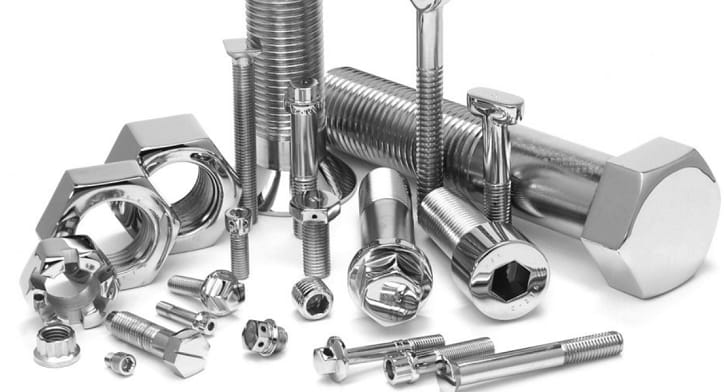Having the right tools and materials is crucial for successful DIY projects. One of the most common and versatile fasteners used in these projects are screws and bolts.
While some may use the terms interchangeably, there are significant differences between these two types of fasteners. Screws and bolts serve different purposes and have unique characteristics that make them suitable for specific applications.
This article will discuss the critical differences between screws and bolts, highlighting their uses and advantages in DIY projects.
Types of fasteners

Screws and bolts are both fasteners but differ in design and function. A screw is a threaded fastener with a helical ridge that allows it to be rotated into a material, creating a secure joint.
Conversely, bolts are threaded fasteners with a hexagonal head and a partially or fully threaded shank. They require a nut to be tightened, making them ideal for applications that need high tension.
Screws come in various types, such as wood screws, machine screws, self-tapping screws, and drywall screws, each designed for a specific purpose.
Bolts also have different types, including hex, carriage, and lag bolts. Choosing the correct type of fastener is crucial in DIY projects as it ensures structural stability and prevents damage to materials.
Materials used
Another significant difference between screws and bolts is the materials used to make them. Screws are typically made of metal, including stainless steel, brass, and aluminum.
Wood screws are often made of more complex materials, such as bronze or gold, to withstand high-stress levels. Machine screws, on the other hand, can be made of various metals such as steel or titanium and have different finishes for corrosion resistance.
Bolts are also made of metal, including steel, stainless steel, and brass. However, they can also be made from non-metal materials such as plastic or nylon for specific applications. The choice of material depends on the intended use and the environment in which the fastener will be used.
Installation process

The installation process for screws and bolts also differs significantly. Screws are designed to be threaded directly into a material, making them easy to install with a screwdriver.
A pilot hole is often necessary when using wood screws or in dense materials such as hardwood. Machine screws require pre-drilled holes and are secured with nuts on the other side of the material. Bolts, on the other hand, require a more complex installation process.
A hole must be drilled in both materials being joined, and the bolt is inserted through one side while a nut tightens it on the other side.
This process requires multiple tools, such as spanners or pliers, making it more time-consuming than screw installation. It also allows for more adjustments and fine-tuning, making bolts ideal for precise and secure connections.
Structural stability
Screws and bolts also differ in their structural stability. Screws create a strong joint by threading directly into the material, making them ideal for joining thin materials such as wood or metal sheets.
They are also suitable for applications that require periodic disassembly, as screws can be easily removed and reinserted multiple times without weakening the joint. On the other hand, bolts create a more secure and permanent joint due to the use of nuts.
The tension created by tightening the nut onto the bolt creates a more robust connection that can withstand higher stress levels. Bolts are commonly used in heavy-duty applications such as construction or automotive assembly.
Cost

The cost of screws and bolts also differs depending on the type and material. Generally, screws are more affordable than bolts as they require fewer tools for installation and come in larger quantities.
However, the cost can vary significantly based on the type of screw or bolt needed for a specific project. For example, self-tapping screws used in metal applications may be more expensive than regular wood screws.
Bolts can also be more expensive, requiring additional components such as nuts and washers. The choice between screws and bolts should not solely be based on cost but on the connection’s intended use and desired strength. Visit https://www.fastenere.com/hex-bolts for a wide selection of high-quality screws and bolts at competitive prices.
Applications
Screws and bolts have different applications due to their unique characteristics. Screws are commonly used in DIY projects for assembling furniture, hanging shelves or pictures, and other light-duty applications.
They are also suitable for outdoor projects as they have better resistance to environmental elements such as moisture and temperature changes. Conversely, bolts are ideal for heavy-duty applications such as construction, automotive assembly, and industrial machinery.
Their high-strength capabilities make them suitable for projects that require a secure and permanent joint. Understanding the specific application requirements is essential to determine which type of fastener is best suited for the project.
Read also: How to Drywall Your Garage for DIY Project Lovers
The bottom line
Screws and bolts are essential fasteners in DIY projects, but they have distinct differences that make them suitable for specific applications.
Screws are ideal for light-duty applications requiring a secure yet adjustable joint, while bolts are best suited for heavy-duty projects requiring maximum strength and stability.
When choosing between screws and bolts, it is crucial to consider factors such as materials, installation process, structural stability, cost, and the intended application. By understanding these differences, DIY enthusiasts can make informed decisions and ensure successful and safe project outcomes.
 Jessica Paster The Future is Green
Jessica Paster The Future is Green